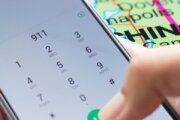Like many San Franciscans, Rose Dawydiak-Rapagnani has had her car window smashed in twice in recent years. The first time she left her gym bag visible in the back seat while parked in San Francisco’s SoMa (or “south of Market Street”) neighborhood, and the second break-in happened about a month ago while she was taking a daytime yoga class in the city’s Mission neighborhood.
After both break-ins, Dawydiak-Rapagnani filed a police report but received no updates. And both times she replaced the window along with the stolen items herself. “Now if I have to bring [my car] into an area that I guess is high risk, I’m using Uber more [to avoid parking my car there],” she says.
[See: 10 Money Leaks to Shut Down Now.]
Car break-ins in San Francisco rose 31 percent from 2014 to 2015, according to local police department data published in the San Francisco Chronicle. National data on auto break-ins can be hard to find, but it’s a growing concern for tourists and residents in many cities.
To reduce your risk, avoid leaving valuables such as laptop bags and suitcases as well as spare change visible through the windows. “People break into vehicles because they see laptops or cellphones that they can easily resell,” says Terri Miller, executive director of Help Eliminate Auto Theft, Michigan’s statewide tip line where bystanders can anonymously report auto theft activity. “Put [valuables] in the trunk or use a blanket to conceal it. Anything that makes it less valuable to break into the vehicle is better,” she explains.
Also, try to park in well-lit public areas. “Avoid parking in areas that are poorly lit or places that are not immediately seen by the public,” says Loretta Worters, vice president of communications for the Insurance Information Institute. “This will not only keep you safe when you exit the car; it will also help keep your car safe because thieves tend to avoid areas that are highly visible,” she says. Park in a garage rather than on the street if you can.
Still, car break-ins can feel almost inevitable even when you take extra precautions. Here’s what to do if your car is broken into:
Take an inventory of your missing items. Figure out what was taken from your car so you can notify the police and determine which items need to be replaced. In addition to money and electronics, sometimes license plates, license plate tabs or auto parts such as tires and rims or catalystic converters are stolen as well, so keep an eye out for those missing items. Report stolen license plates as soon as possible so you’re not on the hook for speeding tickets or toll rides taken by the perpetrators. Serial numbers on your electronics or helpful features like Apple’s “Find My iPhone” tracking tool can be useful for law enforcement. Hopefully, you didn’t store any credit or debit cards or financial documents in your car, but if you did, you’ll want to notify your bank to request new cards immediately and be on the alert for potential identity theft.
[Read: How to Protect Your Credit Card From Thieves.]
File a police report. Unfortunately, some police departments don’t have the resources to investigate every auto break-in. “Law enforcement is going to do what they can, but it’s very difficult to respond when you say ‘my laptop was stolen,'” Miller says. “There’s not much they can do about that.”
Still, even if you’re not optimistic about getting stolen goods recovered or a burglar brought to justice, you should alert the police for two key reasons. First, you’ll likely need a police report if you decide to file an insurance claim for damage to your vehicle. Second, reporting car break-ins can help law enforcement identify patterns such as neighborhoods or streets that burglars are targeting more heavily. Depending on your jurisdiction, you may need to show your driver’s license, vehicle registration and other documents to file a police report.
Park your vehicle somewhere secure until you can repair your windows. A car with one or more broken windows is an easier target for auto theft, so try not to park your vehicle on the street. Instead, park in a secure garage or other location until your car doors and windows can be fully secured. Parking indoors will also protect your car’s interior better than duct tape and plastic in case of inclement weather such as rain or snow.
Decide whether to file an insurance claim. Damage caused by a burglar and stolen personal property could fall under two different insurance policies. “If you have comprehensive coverage on your auto policy, your insurance company will most likely pay to repair any damage the burglar has done to your car,” Worters says. “Theft coverage applies to the loss of the vehicles as well as parts of the car such as damaged or stolen airbags.” To recoup losses on stolen personal property, you’d likely need to file a claim under your homeowners or renters insurance, which are subject to the limits of individual policies.
[See: 50 Ways to Improve Your Finances in 2016.]
On the other hand, if you can afford to repair a broken window or replace stolen laptop or if the cost of repairs or replacement isn’t much higher than your deductible, you might decide not to file an insurance claim and risk an insurance rate hike. “If there was significant damage done to the car and a lot of personal possessions claimed, premiums on your auto insurance and homeowners or renters insurance policy could rise from the one incident,” Worters says. “Premium rates for comprehensive insurance are affected by the risk of loss, meaning the likelihood that an insured car will be stolen or damaged, and also the car’s value at the time of the loss,” she adds.
More from U.S. News
10 Unexpected Costs of Driving
10 Ways to Protect Yourself From Online Fraud
12 Ways to Be a More Mindful Spender
4 Steps to Take After Your Car Is Burglarized originally appeared on usnews.com







